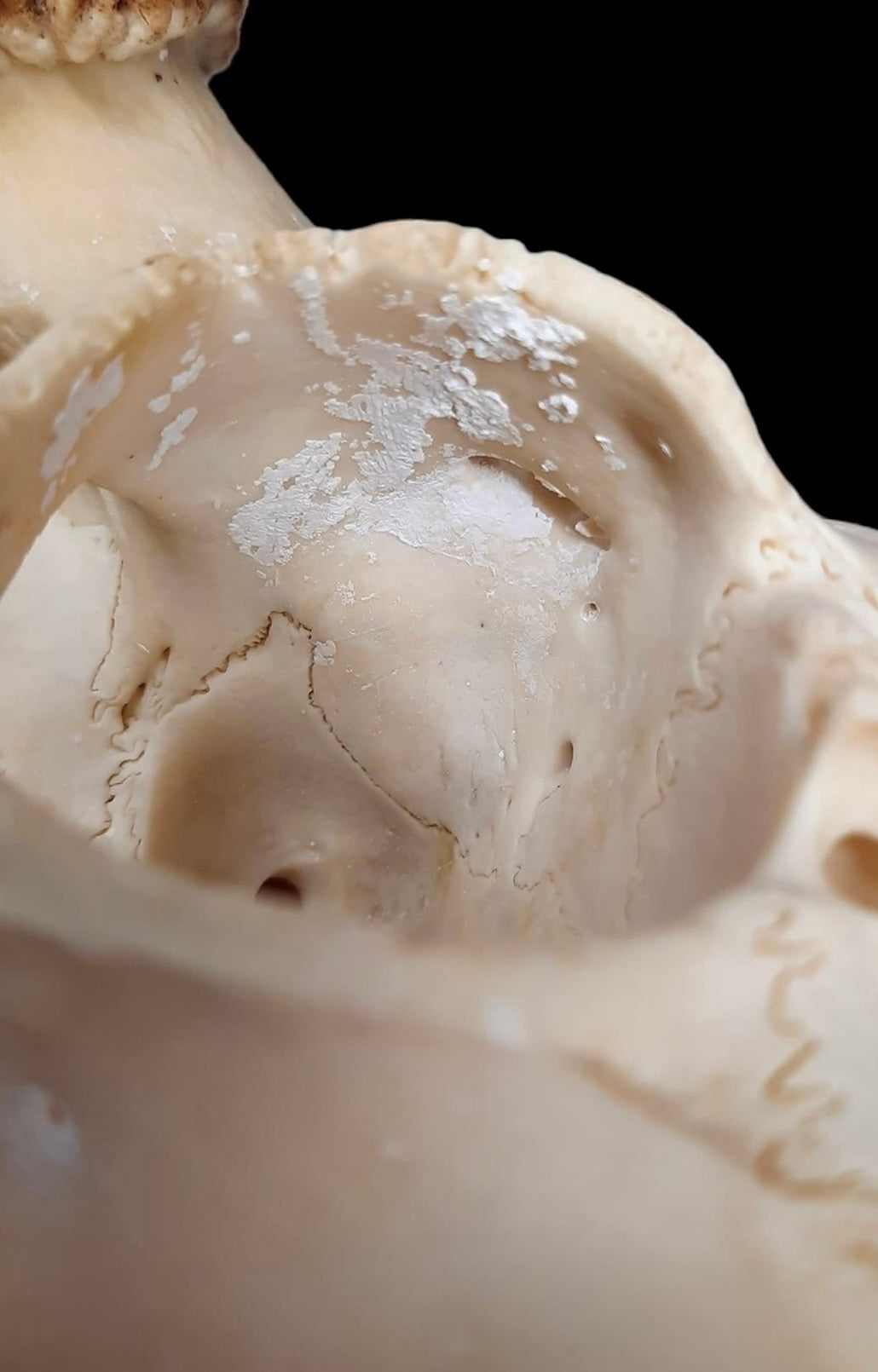
Adipocere on Bones
Adipocere, often called corpse wax or grave wax, is a somewhat eerie substance that forms when human or animal fat breaks down under specific conditions. It presents as a waxy white or cream color solid that is usually found in crevasses and pits of bones, but can manifest anywhere depending on the environmental state.
Adipocere forms when bodies decompose in environments that are moist, cool, and low in oxygen, such as burial sites or underwater. The process begins with bacteria breaking down body fats into fatty acids as decomposition occurs. These fatty acids then react with calcium from the bones, creating the waxy substance known as adipocere. This process mainly occurs in anaerobic conditions (environments with little to no oxygen), which slows down normal decomposition and allows adipocere to form. The formation of adipocere can preserve soft tissues and slow the decomposition of the body, leading to the unique preservation often seen in archaeological and forensic contexts such as fully saponified bodies.
For those involved in bone cleaning, particularly through maceration (soaking bones in water to remove soft tissues), adipocere can present a tricky challenge, especially in cooler weather. To prevent it from forming, it’s crucial to maintain a warm maceration setup. Using a tote or cooler with an aquarium heater set between 80-100°F (26-37°C) can create an environment that is less conducive to the formation of adipocere. The warmer temperatures help to speed up the decomposition process, reducing the chances of adipocere developing.
If you find yourself dealing with adipocere, don’t worry—it can be removed with some effort. The best time to handle it is when it’s dry. Start by using an old toothbrush or a coarse-bristled brush to scrub off the waxy substance. Be prepared for a lot of dust, it’s a good idea to work in a well-ventilated area and/or wear a mask. For smaller, harder-to-reach areas, a dental pick can be very effective. It allows you to get into the nooks and crannies without damaging the bone. For larger bones or skulls, fine-grit sandpaper can help remove stubborn patches of adipocere. However, be gentle to avoid scratching the bone surface. It might take some patience and careful work, but the results will be worth it.